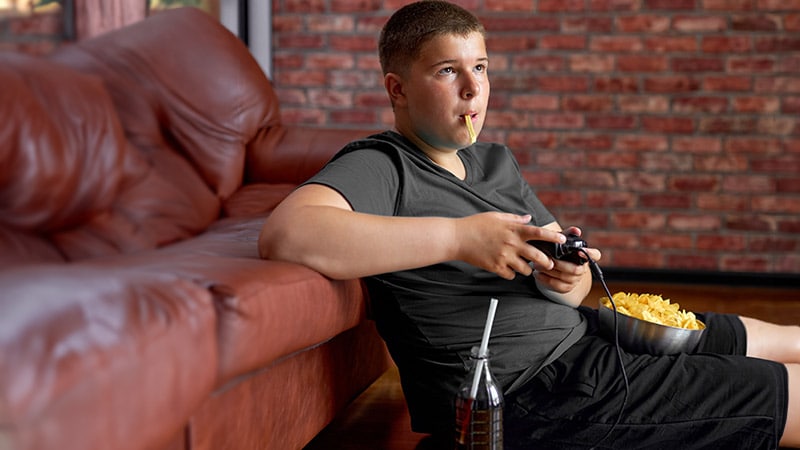Food and beverage ads on video game live streaming platforms (VGLSPs) such as Twitch are the most popular among teens for products high in fat, salt, and sugar (HFSS), according to research published in May. 12, 2024 at the 31st European Congress on Obesity in Venice, Italy.
The presentation by Rebecca Evans from the University of Liverpool in the UK included results from three recently published studies and a submitted randomized controlled trial. At the time of the study, the top VGLSPs in the world were his Twitch (77% market share by viewing time), YouTube Gaming (15%), and Facebook Gaming Live (7%).
“Twitch's endorsement deals with high-profile streamers can be worth millions of dollars, and young people, who are attractive to advertisers, are moving away from television and toward these more interactive forms of entertainment,” Evans said. he said. “These deals include collaborations with brands and promotion of products such as foods high in fat, salt and sugar.”
To further explore the scope and impact of HFSS's VGLSP advertising, researchers first analyzed 52 hours of Twitch videos uploaded to the gaming platform by three popular influencers. The researchers found that food cues appeared at an average rate of 2.6 times per hour, and the average duration of each cue was 20 minutes.
Most cues (70.7%) were related to branded HFSS (80.5%), led by energy drinks (62.4%). Most (97.7%) were not accompanied by advertising disclosures. Most food cues were product placement (44.0%), loop banners (40.6%), or features such as tie-ins, logos, and offers. In particular, these forms of advertising are constantly displayed on video game screens and cannot be skipped or dismissed by viewers.
The team then conducted a systematic review and meta-analysis to assess the relationship between exposure to digital game-based or influencer-mediated food marketing and food-related outcomes. They found that young people are twice as likely to prefer foods presented through digital game-based marketing, and that influencers and digital game-based marketing are associated with increased consumption of HFSS foods. It turns out that it adds about 37 calories at a time.
The researchers then surveyed 490 young people (mean age 16.8 years, 70% female) to investigate the association between food marketing recall of top VGLSPs and food-related outcomes. Ta. Recall was associated with more positive attitudes toward HFSS foods and, in turn, with the purchase and consumption of his commercially available HFSS foods.
Additionally, researchers conducted a laboratory-based randomized controlled trial to investigate the association between HFSS food marketing via simulated Twitch streams and subsequent snack consumption. A total of 91 young people (mean age 18 years, 69% female) were exposed to a mock video containing either an HFSS food advertisement (an image overlaid on a video featuring a brand logo and product) or an unbranded food product. I watched the stream. food. Afterwards, light refreshments were served. Acute exposure to HFSS food marketing was not associated with immediate consumption, whereas more habitual use of VGLSP was associated with increased intake of commercial snacks.
The authors acknowledged that observational studies cannot prove cause and effect and may not be generalizable to all teens. They also noted that some of the findings were based on self-report surveys, which could lead to recall bias and may have influenced the results.
Nevertheless, Evans says, “High levels of exposure to digital marketing of unhealthy foods can lead to excessive calorie consumption and weight gain, especially in adolescents who are more susceptible to advertising. Digital Foods It is important that marketing regulations encompass innovative and emerging digital media.” VGLSP etc. ”
The research became Evans' doctoral thesis and was funded by the University of Liverpool. Evans et al. declared that they had no conflict of interest.


